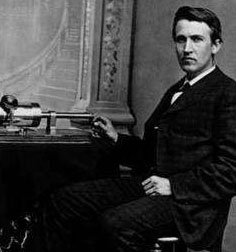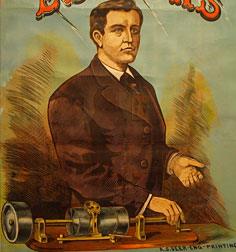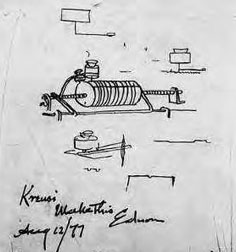
Replaying Sound: Thomas Edison (1847–1931)
Thomas Edison amazed the world in 1877 when he invented his “talking machine,” the first instrument ever to record and play back sound.
The phonograph, as the machine came to be called, made indentations on tinfoil with a stylus. The stylus vibrated up and down as an attached diaphragm responded to sound waves—like the phonautograph recording device developed twenty years before. Edison’s breakthrough, conceived during work on telephones and telegraphs, reversed the phonautograph’s recording process to allow for playback.
In April 1878 Edison licensed rights to sell the phonograph as a machine for office dictation. But sales were poor, and production soon stopped. Edison would not work on the phonograph again until 1888 when, in a frenzy of invention, he applied for seventeen patents on new sound technology.
Tinfoil phonograph recording, about 1879. Edison’s first phonograph records were made from tinfoil indented by a stylus. The recordings quickly disintegrated with repeated playing, and the sound quality left much room for improvement. (Gift of H. R. Dalton)
Poster for demonstration of Edison’s phonograph, 1878. During the spring and summer of 1878, public audiences paid to see and hear Edison’s talking machine. (Courtesy of National Portrait Gallery, Smithsonian Institution)




